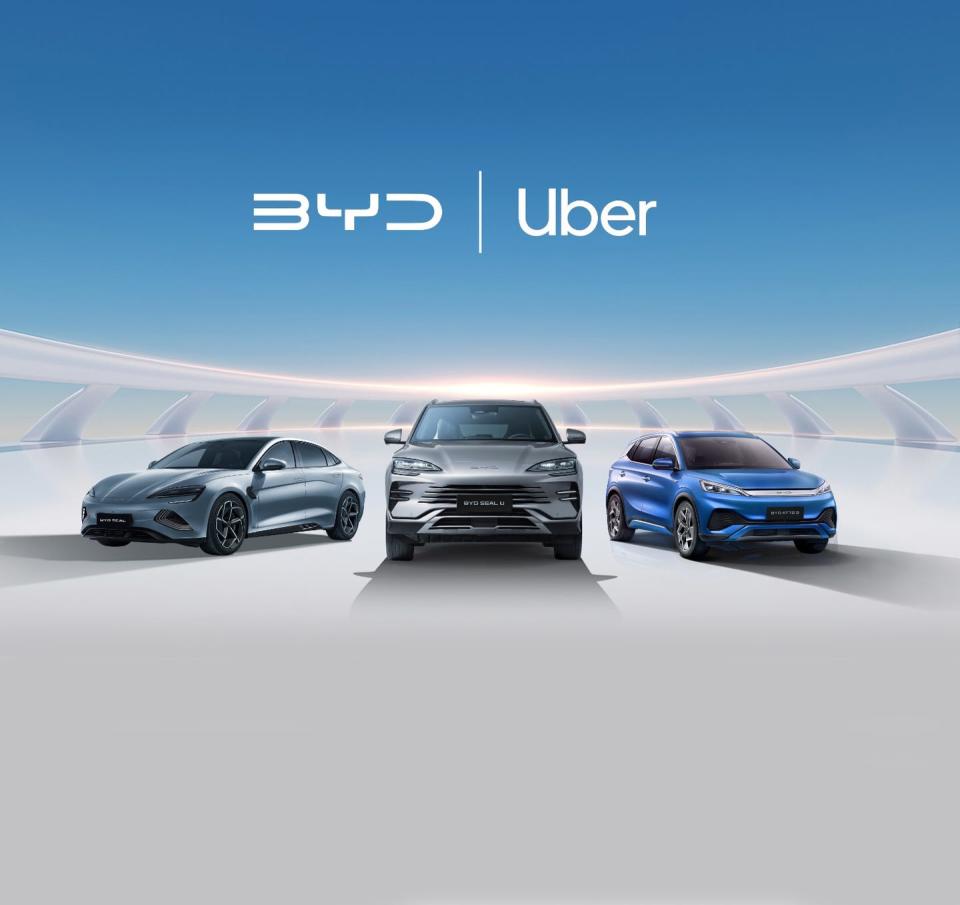Uber’s Plans with This Electric Vehicle Maker Are a Big Deal
Introduction
In a strategic move set to reshape the landscape of electric vehicles (EVs) in the ride-hailing industry, Uber has announced a partnership with Chinese automaker BYD (Build Your Dreams) to introduce up to 100,000 electric vehicles in various markets. This venture not only aims to enhance the EV offerings available to Uber drivers but also marks a significant step towards sustainable transit solutions while positioning both companies for rapid growth in the expanding EV market.
Expanding EV Accessibility
Uber's collaboration with BYD will initially focus on European and Latin American markets, with potential future expansions into regions like Canada. This agreement is a vital component of Uber’s commitment to promote greener transportation options, as the company actively transitions towards electric fleets. BYD has been making headlines globally for its competitive range of affordable EVs, which makes it a perfect fit for rideshare applications where cost-effectiveness is paramount.
The partnership is expected to offer "best-in-class pricing and financing" for Uber drivers, a critical aspect in overcoming some of the major barriers to EV adoption. According to BYD, driver surveys reveal that the high initial cost of EVs and limited financing options remain significant obstacles for many potential EV owners. Through this partnership, Uber aims to provide solutions that could include insurance discounts, vehicle maintenance packages, and streamlined access to charging infrastructure, thus alleviating some financial burdens on its drivers.
Enhancing the Driver Experience
The growth of electric vehicles is not just a trend but a necessity for both environmental sustainability and driver economics. Uber's aim is clear: when drivers switch to electric vehicles, they can potentially deliver up to four times the environmental benefits compared to traditional gasoline vehicles. As Dara Khosrowshahi, CEO of Uber, noted, "Many riders also tell us their first experience with an EV is on an Uber trip, and we're excited to help demonstrate the benefits of EVs to more people around the world." This means that rideshare companies play a pivotal role in shaping public perceptions of EVs, making them more approachable and desirable for the average consumer.
BYD’s position in the market complements this strategy. With its rapid expansion into international markets, including Europe and South America, BYD’s offerings are gaining traction outside its traditional stronghold in China. As these markets begin to adopt more electric vehicles, the collaboration with Uber could help solidify BYD's brand presence in North America, especially if the company successfully navigates regulatory challenges related to tariffs and other trade barriers.
Long-Term Vision: Autonomous Capabilities
Beyond immediate financial incentives and vehicle availability, Uber and BYD also have their eyes set on the future of transportation: autonomous driving. Their plans include potential co-development of vehicles equipped with advanced autonomous technology. While relying on human drivers remains part of Uber's current operational model, the integration of autonomous vehicles (AVs) represents a long-term vision that could significantly reduce operational costs and enhance rider experiences. Although Uber may not be actively pursuing a large-scale robotaxi network at this very moment, it is exploring all avenues for eventual integration of Level 4 autonomous vehicles into its services.
Economic Implications and Market Dynamics
The collaboration is reflective of broader trends in the automotive and rideshare industries. With Uber facing its share of financial difficulties in previous years, the pivot toward leasing vehicles marks a dramatic shift in their business model. It indicates a maturation of Uber's operations as it moves from being solely a ridesharing platform to potentially becoming a leasing company that leverages its existing driver base. By facilitating Karl rentals and offering leasing options through the Uber app, it effectively creates a dual revenue stream, serving both drivers and passengers.
As BYD seeks to position itself as a formidable player in North America, the success of this partnership could hinge on its ability to establish a sales and distribution network that effectively meets consumer needs while mitigating tariff-driven price increases. Should BYD manage to overcome these challenges, it could revitalize the North American EV market, offering a high-quality, cost-effective alternative to incumbent automakers.
Conclusion
Uber's partnership with BYD to offer 100,000 electric vehicles is more than just a business deal; it signifies a pivotal moment in the evolution of ride-hailing services and the adoption of electric vehicles. By addressing the barriers to EV ownership for drivers and paving the way for future innovations in autonomous technology, this collaboration is a critical step towards achieving a sustainable future in transportation. As both companies embark on this journey, the ramifications will likely be felt industry-wide, laying a foundational precedence for the future of mobility solutions globally.
Call to Action
As this partnership unfolds, stakeholders and analysts will be closely watching how it plays out in the broader EV marketplace. The success of this initiative could set the stage for further collaboration across the industry. For now, the integration of BYD’s electric vehicles into Uber's fleet may just be the beginning of a transformative era in the ride-sharing industry. What do you think about the implications of this partnership for drivers, consumers, and the environment? Share your thoughts in the comments below.
